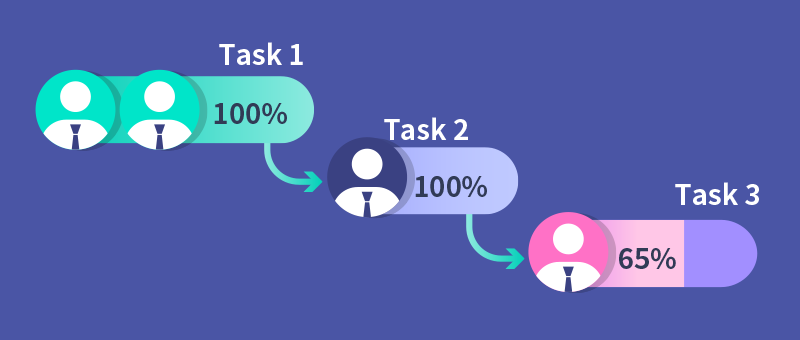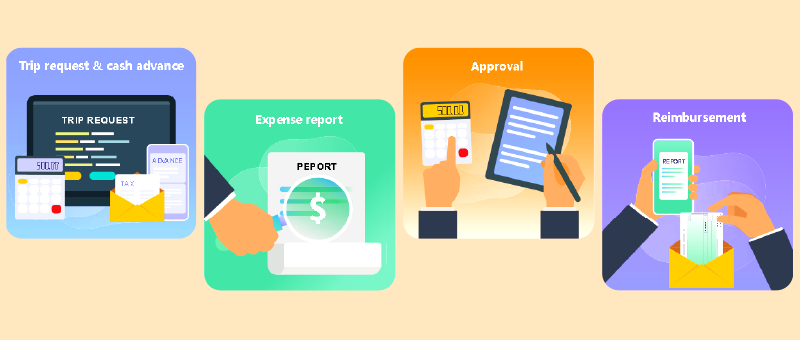Fixed Asset Management

Fixed assets are also known as tangible assets or real estate, plants and equipment. In the accounting field, fixed assets are assets and property that can be easily converted into cash. They can be defined as long-term tangible parts of property or equipment that an organization owns and uses to generate revenue from its operations. Fixed assets are not expected to be exhausted or converted into income and appear on the balance sheet within a year. Here are some examples of fixed assets:
- Office supplies (such as projectors, FAX machines)
- Computer equipment
- Buildings
- Furniture
- Manufacturing Equipment
- Cars
- Machines
Basically, these assets depreciate over their useful lives.
Fixed assets are often managed with asset tags, which are tracked by serial numbers or barcodes for easy organization and filed for accounting, maintenance, and theft prevention purposes. In short, it is a process of tracking and maintaining an organization’s physical equipment and assets. The main reasons for implementing fixed asset management are asset maintenance, asset tracking and loss prevention.
- Purchasing details
- Quantity
- Site
- Depreciation
You can do the following:
- Track and monitor fixed assets
- Overlook equipment and machinery from multiple locations
- Lower maintenance cost
- Improve operational efficiency
- Keep records of scrapped, sold, stolen or lost assets
 Fixed Assets improves visibility and control over assets, allowing you to organize and monitor equipment, such as recording asset location and maintenance, and keep them in good working order. It helps minimize equipment failures and downtime to increase the overall value of the asset.
Fixed Assets improves visibility and control over assets, allowing you to organize and monitor equipment, such as recording asset location and maintenance, and keep them in good working order. It helps minimize equipment failures and downtime to increase the overall value of the asset.
Below are the benefits you can get with  Fixed Assets:
Fixed Assets:
Asset optimization
Accurate asset management can optimize day-to-day actions and operations involving planning, resource usage and execution of management plans.
Extend life cycle
Every asset requires support services and if not provided, it can result in huge expenses. Asset management continuously checks all this information and ensures that assets are managed accurately, extending their life cycle and optimizing your property. It is very effective in monitoring and managing assets.
Save maintenance costs
During the operational phase of an assets life cycle, a commercial company may face several maintenance issues. Insufficient maintenance can lead to reduced efficiency, which in turn affects the interests of the organization.  Fixed Assets offers you help in the implementation of regular maintenance.
Fixed Assets offers you help in the implementation of regular maintenance.
Remove non-existent assets
These assets are removed from books that were previously incorrectly recorded, thereby adjusting inventory records. In this way,  Fixed Assets allows you to monitor assets as well as asset recovery.
Fixed Assets allows you to monitor assets as well as asset recovery.
Accountability and safe custody of assets
One of the most important functions of fixed asset management is the safe custody of assets. This asset security is achieved through a designated responsible person. Accountability of assets is to increase the level of security and reduce incidents of theft or misuse of assets. Otherwise, the bottom line and cash flow will be decreased.  Fixed Assets supports you to take good risk management actions, including maintaining high standards of data integrity and custody of ownership documents.
Fixed Assets supports you to take good risk management actions, including maintaining high standards of data integrity and custody of ownership documents.
Fixed asset tracking
Some organizations have a large number of assets and need to track the movable ones they care about to guarantee the assets’ safety and efficiency. With  Fixed Assets, relevant managers can manage the latest data and asset information by trailing after asset location, usage, designated personnel, maintenance, etc., and maintain asset safety, productivity and efficiency.
Fixed Assets, relevant managers can manage the latest data and asset information by trailing after asset location, usage, designated personnel, maintenance, etc., and maintain asset safety, productivity and efficiency.
Asset lifecycle management
 Fixed Assets provides the process of controlling, monitoring and accounting for assets throughout their life cycle, tracking and recording every detail and every action taken by any user on an asset from the date of its acquisition to disposal, while keeping the data as historical records. It promotes the improvement of asset lifecycle planning, asset utilization monitoring, planned maintenance and, if necessary, replacement.
Fixed Assets provides the process of controlling, monitoring and accounting for assets throughout their life cycle, tracking and recording every detail and every action taken by any user on an asset from the date of its acquisition to disposal, while keeping the data as historical records. It promotes the improvement of asset lifecycle planning, asset utilization monitoring, planned maintenance and, if necessary, replacement.
Asset tag
The practice of asset tagging enables you to effectively and appropriately manage and control assets from a long-term perspective.  Fixed Assets uses a unique identification code (asset number) for fixed asset tagging, helping to easily complete asset tracking.
Fixed Assets uses a unique identification code (asset number) for fixed asset tagging, helping to easily complete asset tracking.
Physical asset checking
 Fixed Assets allows regular checking of physical assets to ensure their existence. Physical verification checks the results against the asset records in the system. It helps identify ghost assets. A ghost asset is an asset that is lost, stolen or unusable but recorded as a valid asset. Assets that actually exist but are not mentioned on the record can also create problems.
Fixed Assets allows regular checking of physical assets to ensure their existence. Physical verification checks the results against the asset records in the system. It helps identify ghost assets. A ghost asset is an asset that is lost, stolen or unusable but recorded as a valid asset. Assets that actually exist but are not mentioned on the record can also create problems.
Fixed asset management is important to any business as it directly affects the organization’s future planning and vision.  Fixed Assets is able to take the necessary attention and corrections to the asset acquisition and control process to protect the asset. This is accomplished through proper planning and data-driven information that facilitates effective decision-making to improve business outcomes.
Fixed Assets is able to take the necessary attention and corrections to the asset acquisition and control process to protect the asset. This is accomplished through proper planning and data-driven information that facilitates effective decision-making to improve business outcomes.
























































































































